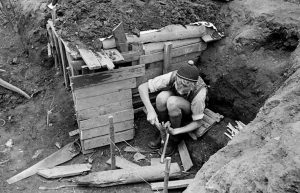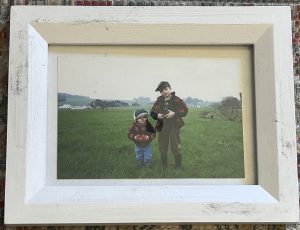In this week’s module in the Hyperlinked Library course we are exploring Infinite Learning in a choose your own adventure model. The subject that drew my interest was Learning Everywhere. When thinking about learning opportunities in the outside world, the possibilities are endless. When you focus this subject into the world of libraries, you find a very special subset of learning opportunities for patrons created by information professionals. Stephens (2019) wrote “Emerging technologies can change our library services and library learning.” This can look many different ways, like Stephens (2024) explains “..encouraging creativity in as many ways as possible, from art, performance and intellectual exchange to DIY programs, hack-a-thons and access and instruction on making things.”
An article that stood out to me in this week’s materials was Dowdy’s (2022) What the Nordics can teach us about having fun. This article explores the cultural phenomena of Scandi and Nordic attitudes towards play and the role that design has played into this. She describes that children in these cultures are at the center of thinking when it comes to architectural design for public spaces. “Since the 1940s, kids in the region have been getting muddy and wet and taking risks in well-designed play areas, and these once-pioneering ideas have spread” (Dowdy, 2022). She gives a short history lesson about Danish architect Carl Theodor Sørensen who observed that children were playing more outside of play structures where things were more free-form. This lead to the term “skrammellegepladser or ‘junk playgrounds’” which gives urban children the opportunity to play like country kids do, reference image below.

Getty Images. Images retrieved from https://www.bbc.com/culture/article/20220207-what-the-nordics-can-teach-us-about-having-fun
I really resonated with this article as a country kid myself. I grew up in a remote coastal town in Northern California called Two Rock. My older brother and I had 10 acres of land to explore, play and learn on. I didn’t often have play dates with other kids because we commuted into town so self-guided play was what I did most as a kid. I remember building, digging, climbing and exploring on our ranch. On the special occasion, we had kids come over for a play date and get the real country experience. When the play date was over and the other kid’s parents had arrived, my mom would stand on the deck and blow an air horn to communicate with us that we needed to come back in. No matter how far we adventured, we could always get back before her fourth air horn. At that point, depending on how dirty we were, we’d get hosed off outside and get a change of clothes. These childhood memories of adventuring and playing in our own personal “skrammellegepladser” allowed for my brother and I to grow into creative, independent humans.

Me (left), my older brother (right) circa early 90’s in our own personal junk playground, geared up with binoculars for that day’s adventure.
This semester I am focusing on the participatory library where libraries are engaging their communities and integrate them into change. How can we engage in “skrammellegepladser” for a public library? Does this involve an open area for play with materials and pools in an outdoor space for children? Maybe some programming can be involved with tools to support the type of exploration “skrammellegepladser” describes. Or, is there a local organization that can host this kind of play? I think engaging with the local communities of my library system to see what kind of “skrammellegepladser” would work best for them and their kids would be the best way to meet this need.
Written by @ali0
References
Dowdy, C. (2022). What the Nordics can teach us about having fun. BBC. Retrieved from https://www.bbc.com/culture/article/20220207-what-the-nordics-can-teach-us-about-having-fun
Stehens, M. (2014). Making the case for the library as a space for infinite learning. YLibrary?. Retrieved from https://www.dropbox.com/scl/fi/4zt1yliwb2ffzr8euix2p/YLibraryInfiniteLearning.pdf?rlkey=m0v6lkd43ufilkp5aktawhlpr&e=1&dl=0
Stephens, M. (2019). First part of the “Infinite Learning” chapter in The Heart of Librarianship, P. 119 – 128.

Thanks for reflecting on this free form play concept. It’s so important. I remember my youngest, when he was just about 1 and 1/2, we moved to the country in the middle of “greasewood” or “the chicos” as it is called there. My son had big blond curls on his head and he was about the same size as the chicos. We could watch him bopping up and down as he moved through our acreage. But that’s not what I came here to say *grin* I wanted to share that somewhere in the Denver metro area I remember seeing a junk playground. It was the first time I’d heard of that kind of thing. I love it! Here in Southern Maine, there are a handful of outdoor preschools. They have almost no indoor activities. They spend the whole day outside, no matter the weather. I love this concept!